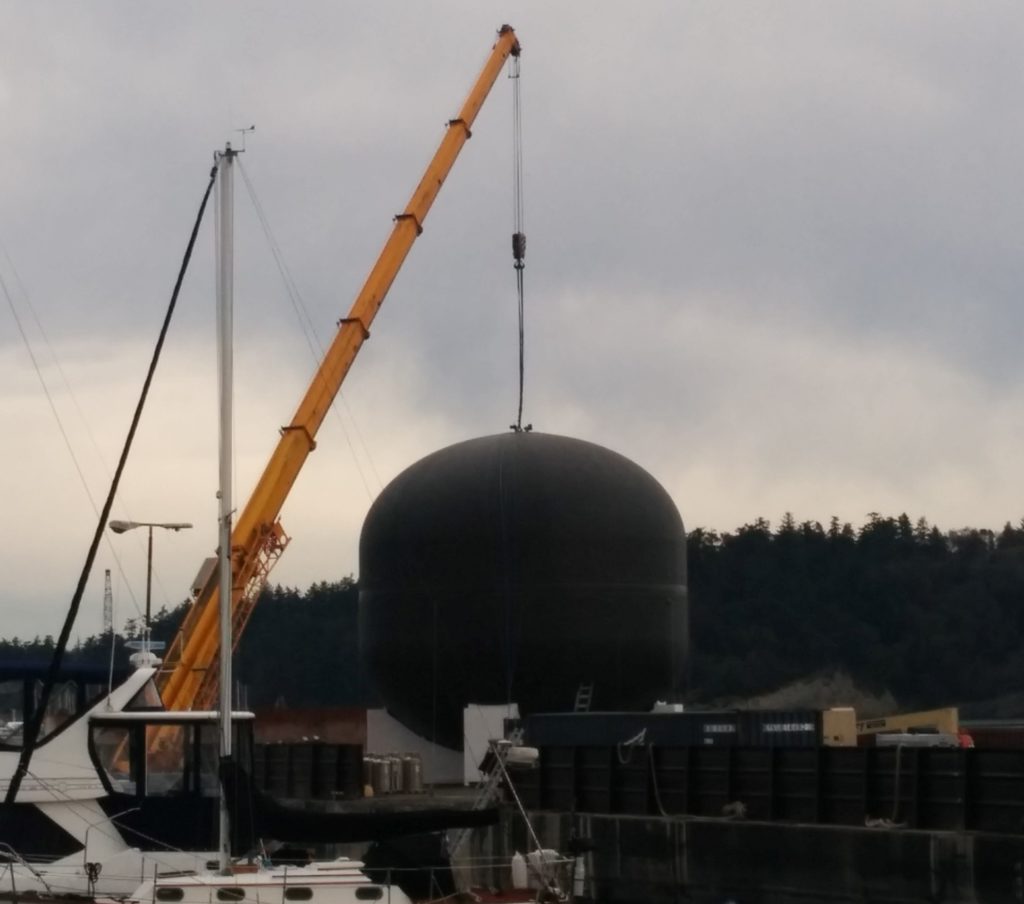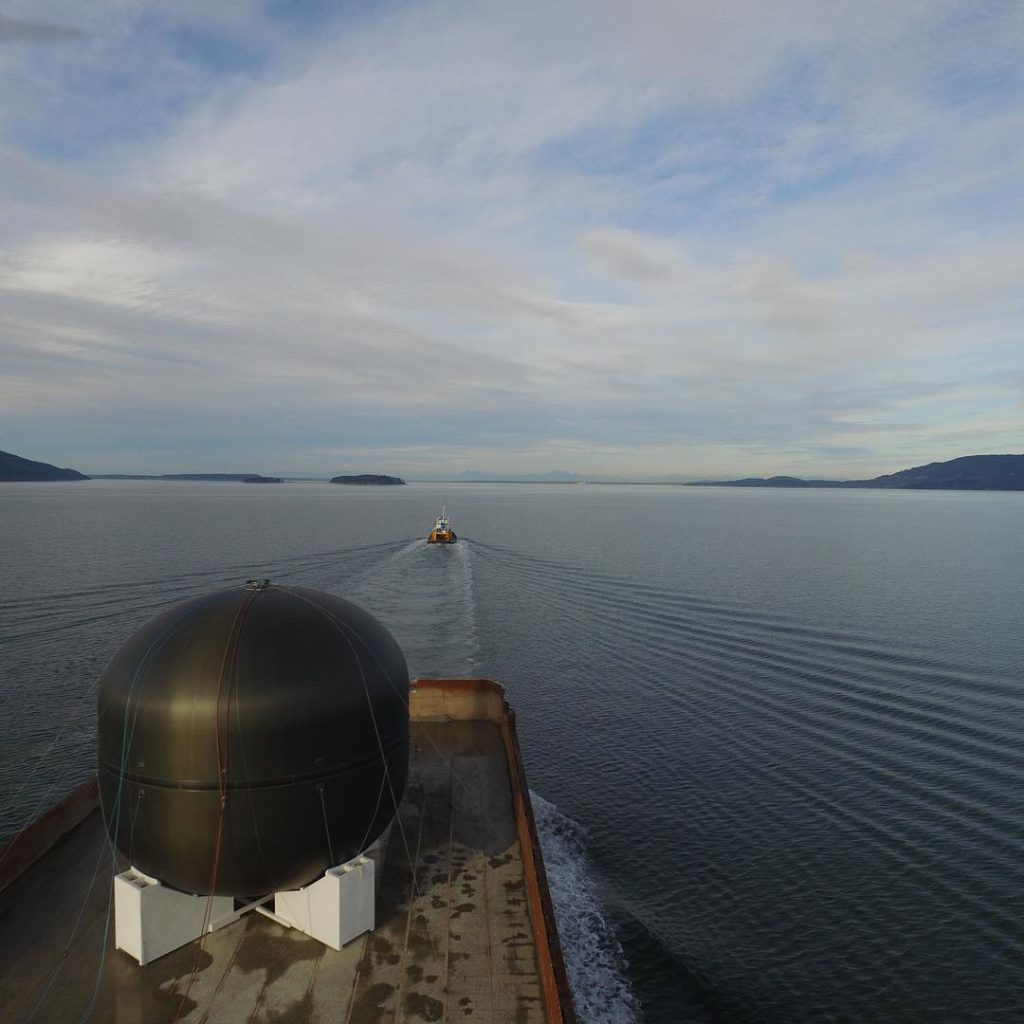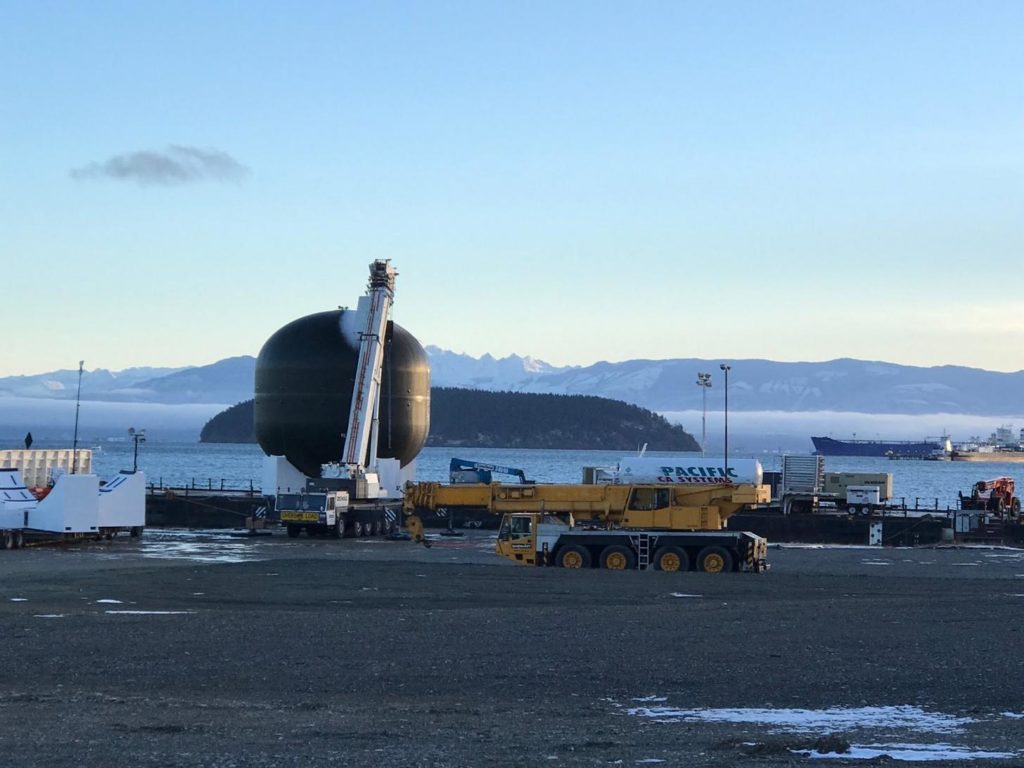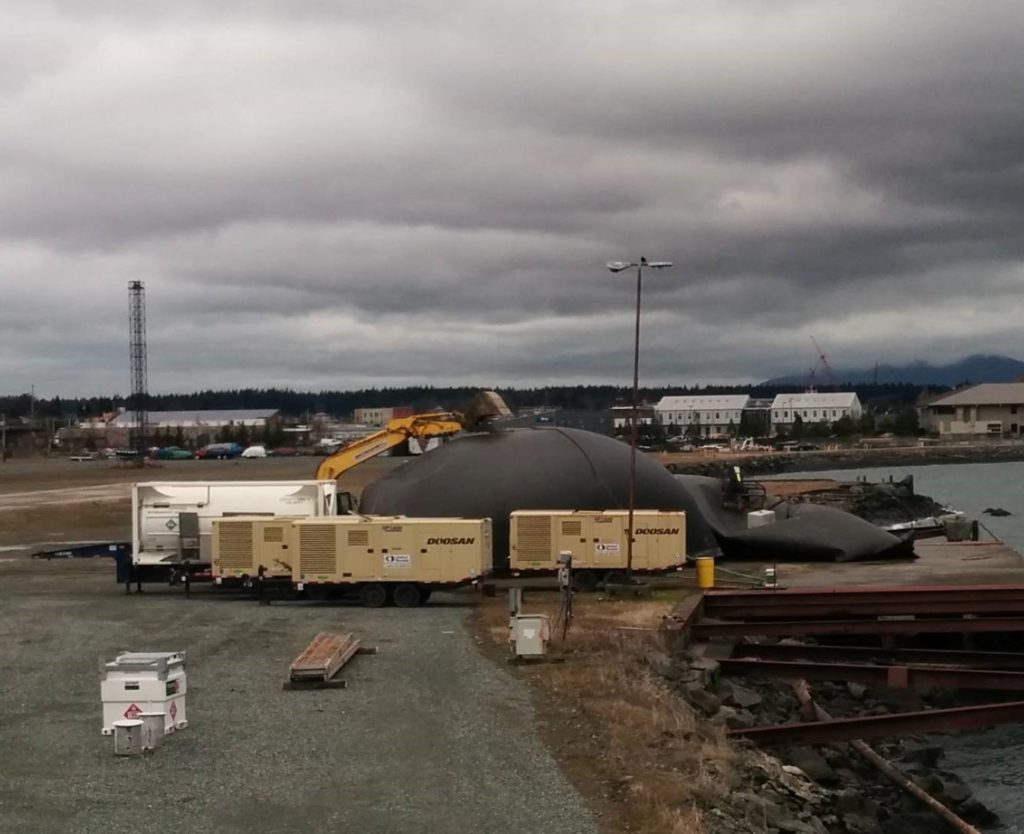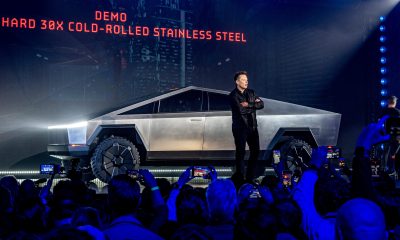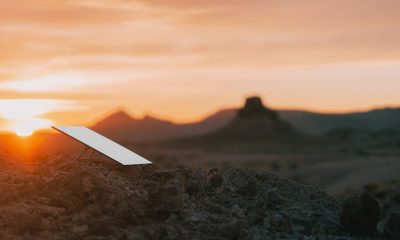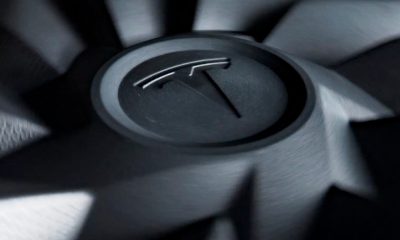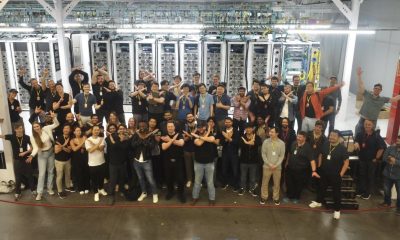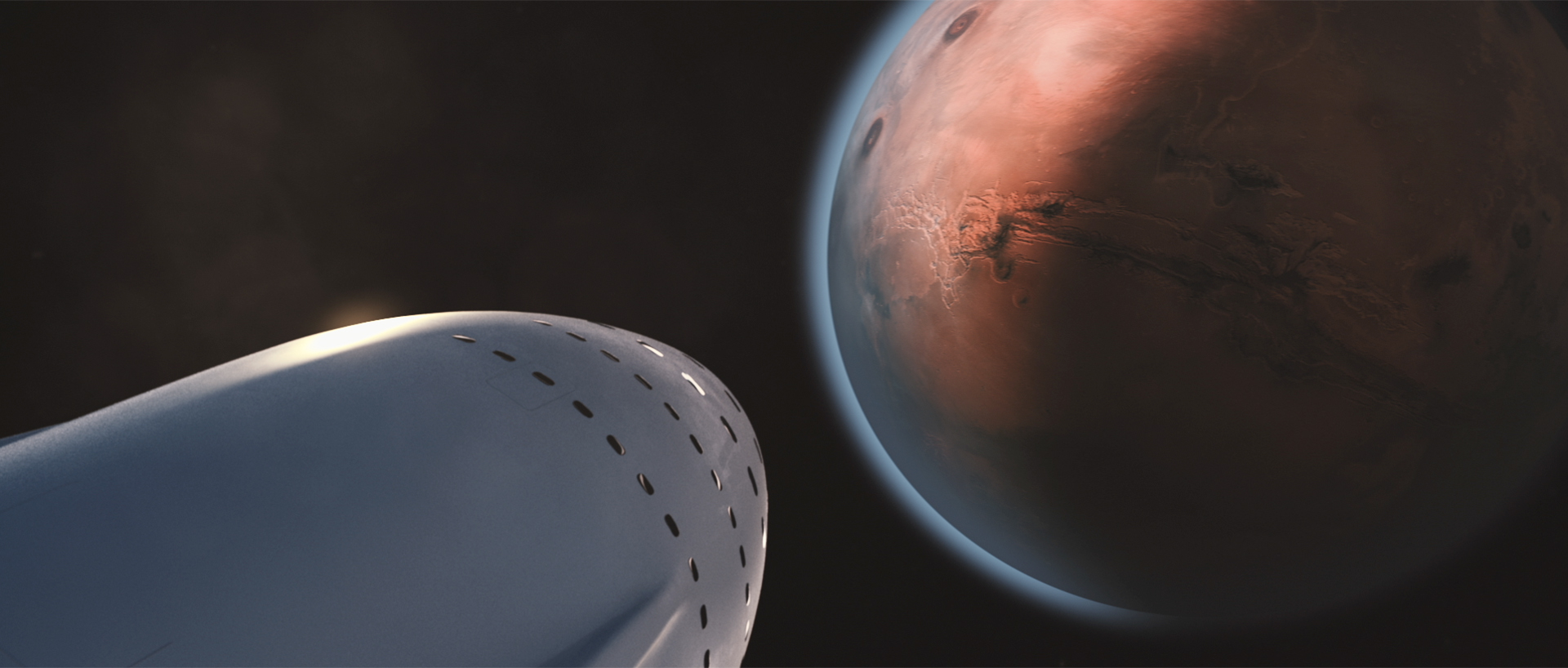
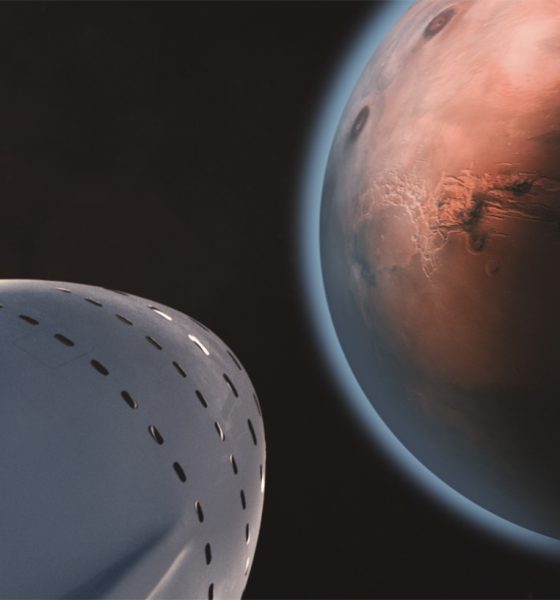
News
Elon Musk teases an update to SpaceX’s Mars architecture later this year
Elon Musk and SpaceX are aiming to provide a second update on the company’s Mars architecture plans in late September of this year, likely at the 2017 International Astronautical Congress (IAC) in Adelaide, Australia.
While 2017 has been extraordinarily busy and successful for SpaceX thus far, it has also been a somewhat quiet year for Mars and the technology being developed to colonize it affordably. There was a brief flurry of social media information focused on the testing of the ITS carbon composite test tank revealed at the 2016 IAC, with a few pictures and a video of its transport. This activity, as well as Elon Musk’s Ask Me Anything on /r/SpaceX, occurred a month or two after the 2016 IAC, in October and November.
https://www.instagram.com/p/BM4P6b_g2N9/?taken-by=spacex&hl=en
The only concrete information revealed about SpaceX’s Mars ambitions in 2017 have so far been distributed by Musk over Twitter and in an interview of SpaceX President and COO Gwynne Shotwell a few weeks ago. Musk offered tentative time frames for a possible update of the Mars architecture, stating that he believed it dealt with the far more crucial challenge of how to finance such a large endeavor’s significant R&D costs.
Maybe the upcoming IAC in Adelaide
— Elon Musk (@elonmusk) July 11, 2017
During his 2016 reveal, Musk estimated that something like $10 billion would be required to complete development and initial construction of the Raptor engine and ITS test articles. While it is believed that SpaceX has at least several hundred million dollars of liquid capital available, growing several billion dollars of capital is a much greater challenge that will likely require a different methodology than those typically employed by Musk.
Shotewell also discussed SpaceX’s Mars ambitions off and on during an hour-long interview on The Space Show. Of general interest, she mentioned that the current team working on Mars-related research and development was “tiny”, but that it would become a drastically more resource-intensive priority as the company completes work on the fifth and somewhat final “Block” of Falcon 9 and finishes the work necessary to begin routinely conducting Commercial Crew missions. Shotwell gave a timeline of “soon” for the beginning of Block 4 flights and “end of year” for the introduction of Block 5, which is intended to significantly increase the reusability of Falcon 9 (titanium grid fins are a feature of this strategy). Barring delays or setbacks for SpaceX, this implies that SpaceX will begin aggressively pursuing the concrete development of their Mars architecture as soon as the latter months of 2018 or sometime in 2019.
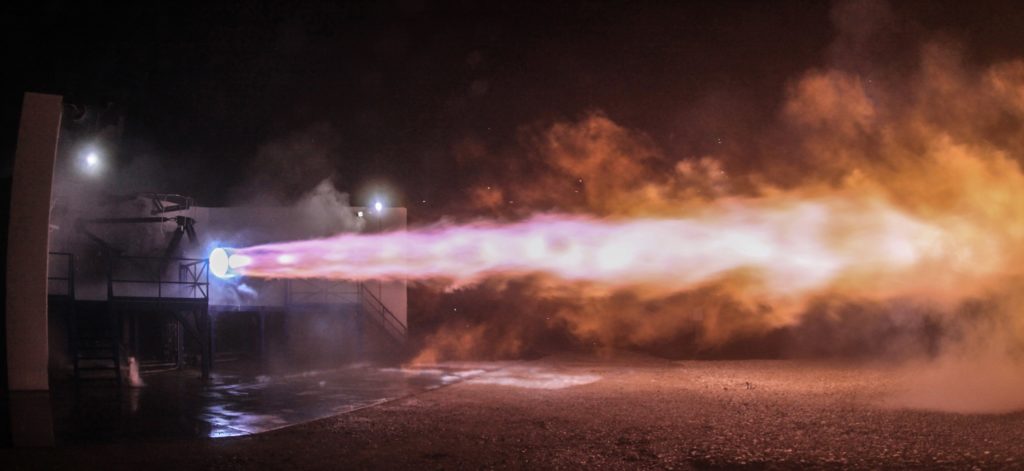
SpaceX revealed this stunning photo of Raptor’s first (partial) hot-fire test the night before Musk’s talk at Guadalajara. (SpaceX)
More specifically, however, Shotwell said that the Raptor test article revealed at the Guadalajara IAC has since conducted “dozens” of tests and is now more seriously considering the engine’s potential utility aboard Falcon 9. The current subscale Raptor components are approximately half the size of the final, operational design, and the need to scale up by as little as a factor of 2 should make the realization of the final design considerably less difficult, and make the testing of the current Raptor far more demonstrative of the operational engine. The exploration of vacuum Raptor as the engine of an upgraded second stage for Falcon 9 would further allow for true on-orbit testing of Raptor, and increasing the performance of S2 would allow for greater flexibility in exploring second stage reuse. Musk and Shotwell have expressed interest in this, particularly given that the second stage is approximately 30% of the cost of every Falcon 9, thus capping any potential cost savings first stage (and fairing) reuse may bring. If SpaceX wishes to lower the cost of launches by a factor of 10 to 100 and bring to life any form of the Mars architecture revealed in Guadalajara, they will have to develop second stage reusability that it is both as rapid, functional, and complete as they soon hope to make first stage reuse.
A fully reusable Falcon 9 would offer the company more cost-effective ways to launch their own profit-driving internet constellation, and could also simply provide deeper profit margins for their main business of commercial launches. However, with Musk having already publicly acknowledged that reusability cost SpaceX approximately $1 billion to develop, SpaceX is certainly already considering the plausibly diminishing returns of diverting more funds and human resources into the continued development of Falcon 9. The most likely outcome is almost certainly some combination of the above goals, whereby SpaceX would delay their Mars exploration timeline by several years and concurrently pursue Falcon 9 second stage reuse and the initial test article development for their Mars architecture, as well as exploring the challenges and intricacies of human spaceflight and deep space exploration with Dragon v2.
- The carbon composite LOX tank test article before its first pressurization testing in northern Washington, mid-November 2016. (Reddit /u/ Death_Cog_Unit)
- SpaceX’s massive carbon fiber liquid oxygen tank seen testing in Northern Washington. BFR’s tankage will be 25% narrower, and thus easier to manufacture. (SpaceX)
- The test article before testing in early February 2017, during which it is believed to have lost structural integrity and failed. (Reddit /u/TeddyBear3238)
- The remains of the test article tank after suspected over-pressure testing. Divers were required to salvage the remains over the course of several days. (Reddit /u/ Death_Cog_Machine)
Of note, the only known major testing event in 2017 related to SpaceX’s Mars program was observed by a SpaceX fan in February of this year. After successful November 2016 tests of the carbon composite tank in northern Washington state, fans noted that the tank had made an outdoors appearance once more in early February 2017. SpaceX mentioned on Instagram that the following test, the one SpaceX was preparing for in February, was a full cryo test of the tank, meaning that it involved actual high-pressure, supercooled liquid oxygen. Another fan noted several days later that the barge SpaceX was testing the tank aboard returned to port empty, and later observed what looked like several large pieces of the tank test article that reportedly had to be recovered from the sound by divers. The logical conclusion is that the tank was destroyed during its second phase of testing, but the crucial and currently unknown fact of the matter is whether the failure was a result of intentionally destructive testing or defects in what was effectively an experimental engineering article. Further SpaceX talks later this year will likely reveal some level of detail as to what transpired in the testing of that prototype carbon composite tank.
Reasoned speculation aside, the latter months of 2017 have multiple talks, speeches, and hearings planned by SpaceX members like Elon Musk and Tim Hughes, and information on SpaceX’s Mars ambitions and other future prospects will almost certainly be offered. Hughes is to attend a hearing at 9am EST on July 13th for the U.S. Senate on commercial space and will be testifying on the subject as a representative and employee of SpaceX. Just under a week later, Elon Musk is scheduled to be the main keynote speaker at the 2017 ISS R&D Conference. His talk is set to begin at 12:30pm EST on July 19th. A handful of months after that, as mentioned above, Musk may also provide a detailed update on SpaceX’s Mars architecture at the 2017 International Astronautical Congress.
In other words, on top of an aggressive 12 possible launches between August and the end of December, SpaceX fans also can look forward to details, photos, and possibly even more about the company’s Mars efforts over the next several months.
News
Tesla Cybercab is heading to China’s import expo
The event will take place from November 5–10 at Shanghai’s National Exhibition and Convention Center.
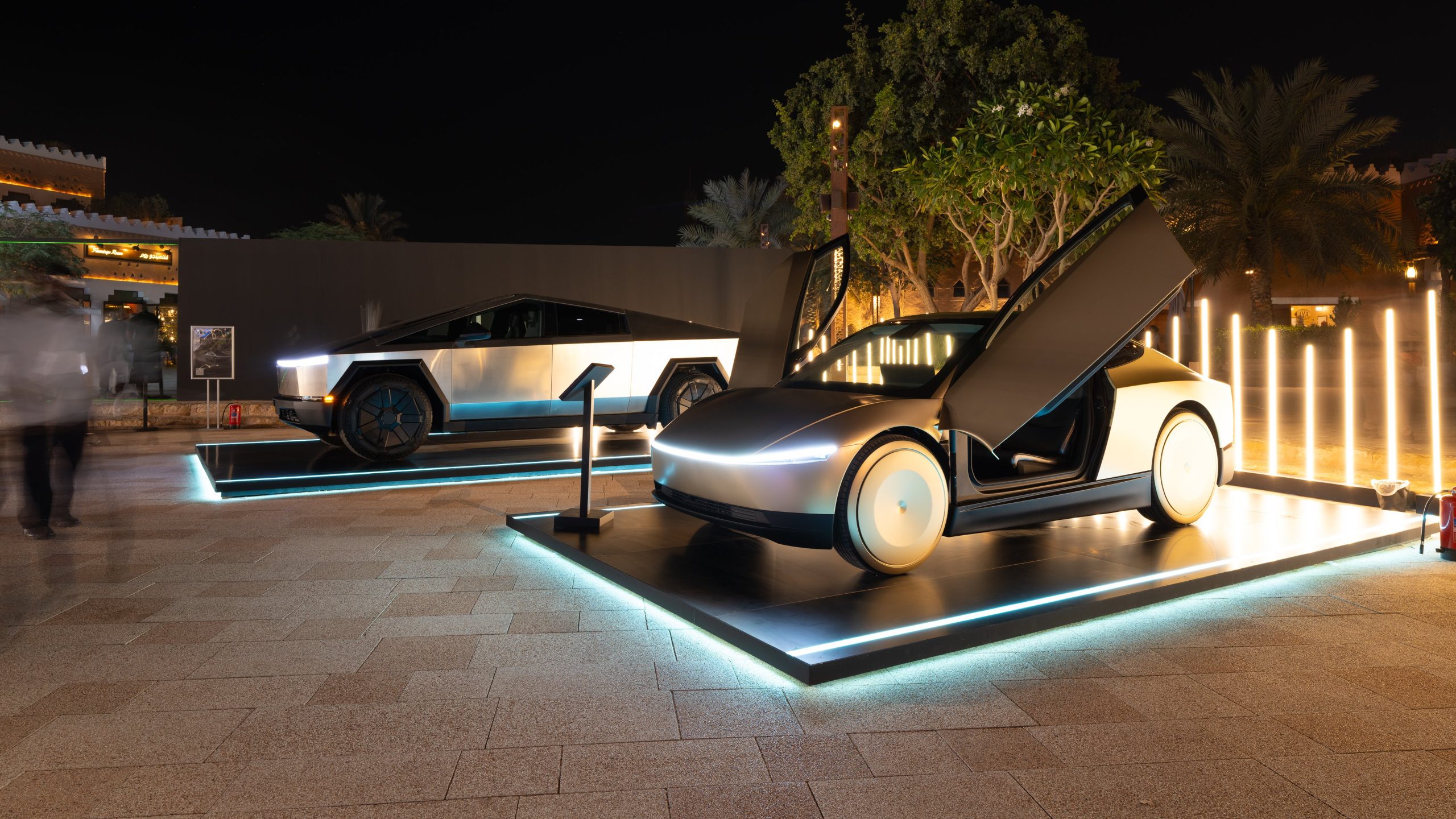
Tesla will make its return to the China International Import Expo (CIIE) this November, marking its first appearance at the event since 2022. The U.S. electric vehicle maker confirmed it will showcase its highly anticipated Cybercab, which will make its Asia-Pacific debut during the event.
The expo will take place from November 5–10 at Shanghai’s National Exhibition and Convention Center.
Tesla Cybercab in China
Tesla announced its participation in the event on its official Weibo account. As per the electric vehicle maker, it would be occupying Booth A3-03 in Hall 2.1 at the National Exhibition and Convention Center. As noted in a CNEV Post report, the Cybercab, the company’s dedicated autonomous two-seater Robotaxi, will be making its Asia-Pacific debut at the CIIE as well.
The company shared a graphic on Chinese social media which showed an image featuring several Tesla products, such as the Cybercab, Optimus, and Megapack batteries. The graphic also featured a building that read “Master Plan Part IV.”
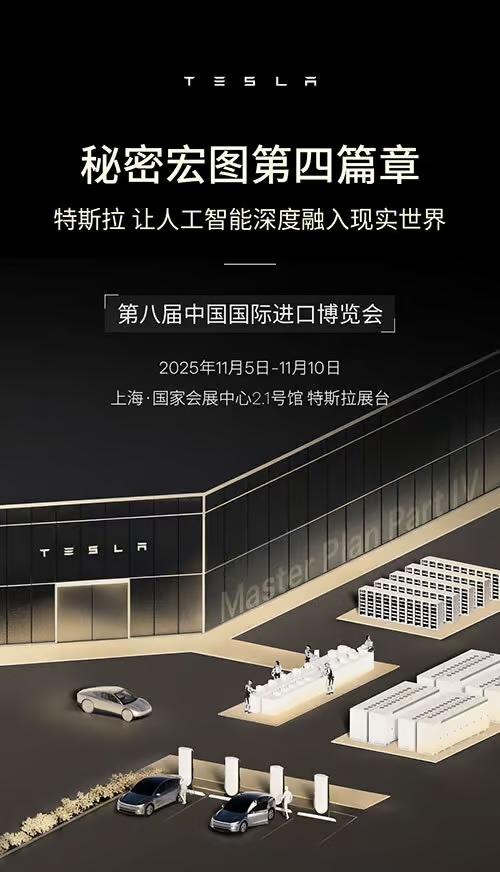
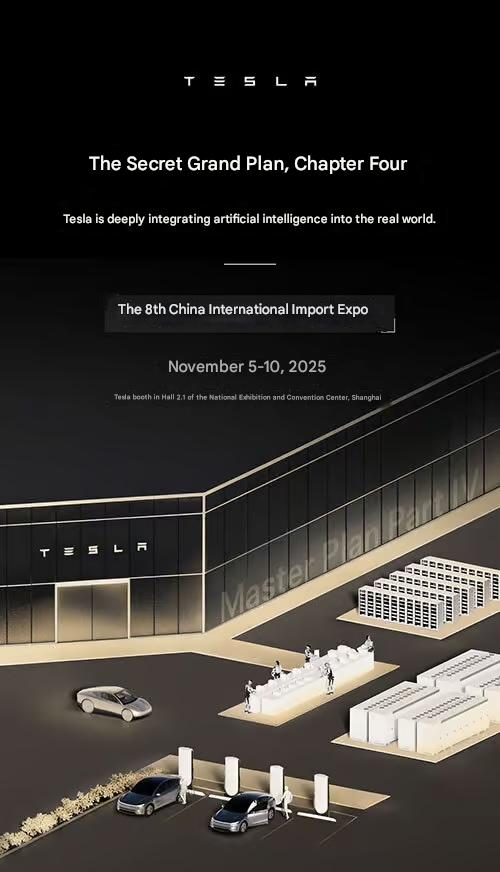
Tesla’s momentum in China
Tesla’s return comes after skipping the event last year. Interestingly enough, Tesla attended the event from 2018 all the way to 2023. Tesla’s return to the CIIE then aligns with the company’s efforts to attract consumer interest in the world’s most competitive electric vehicle market.
The Cybercab’s presence in the event could suggest that Tesla might be interested in bringing its Robotaxi to the country. This is quite interesting as China is already home to several autonomous ride-hailing services, though Tesla’s pure vision approach, which focuses on artificial intelligence and cameras, is quite unique. So far, Tesla has only rolled out its autonomous ride-hailing services in Austin, Texas, and the Bay Area, California.
News
Tesla Semi factory looks nearly complete
Based on recent images taken of the facility, it appears that the Semi’s initial production might be right on schedule.
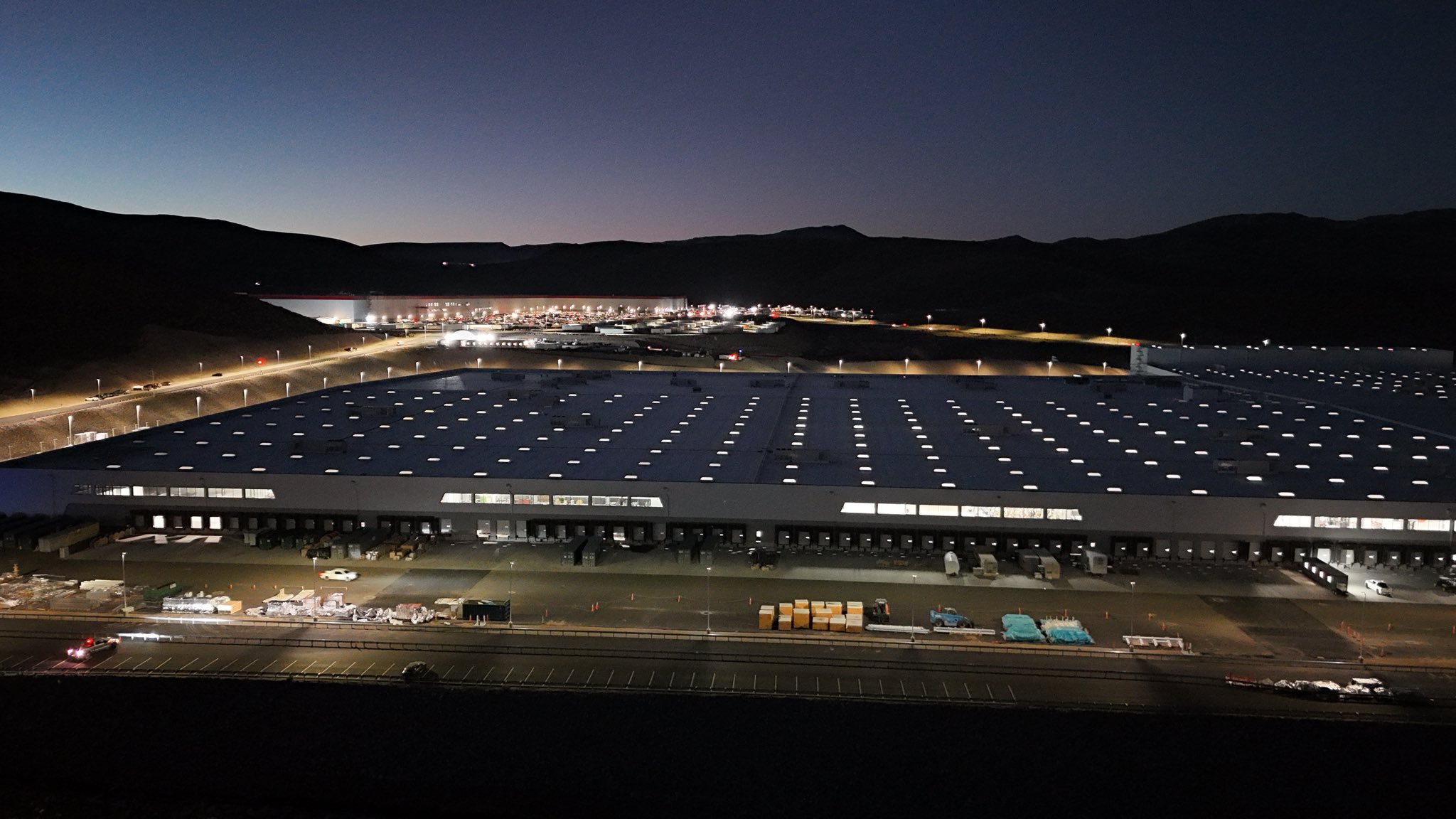
The Tesla Semi factory looks like it is nearing completion. Based on recent images taken of the facility, it appears that the Semi’s initial production might be right on schedule.
This was, at least, as per recent observations from a veteran Tesla watcher who has long been chronicling the progress of the facility.
Tesla Semi factory today
As per longtime Tesla Semi advocate @HinrichsZane, the Class 8 all-electric truck’s factory in Nevada looks almost completed. The facility’s exterior looks finished, which suggests that much of the work being done today is likely focused on the factory’s interior and equipment.
This was highlighted in recent photos taken by the drone operator, which show that the facility’s parking lots are now filled with vehicles. A photo taken before dawn also highlighted just how refined the factory has become over the past months. Needless to say, it appears that the factory is all but ready to start the initial production of the Tesla Semi.
Deliveries and targets
Tesla has stated that the Semi factory will start producing the Class 8 all-electric truck by 2026. This was stressed by Elon Musk in a previous comment on X, when he stated that “Tesla Semi will be in volume production next year.” Once ramped, the facility will be capable of producing about 50,000 Tesla Semi units annually. This should help the Semi disrupt and potentially saturate the United States’ transport sector.
Progress in the Tesla Semi factory has been notable in the past months. Just a few months ago, drone footage of the site revealed that Tesla was shipping extremely large production equipment into the facility. These included what appeared to be a gigantic stamping machine that was so large and heavy that it was shipped to the Semi factory using two diesel trucks and a triple trailer.
Cybertruck
FIRST LOOK: Tesla Cybertruck police cruiser interior
The LVMPD released a new video of the police cruisers that were donated by billionaires Ben and Felicia Horowitz.
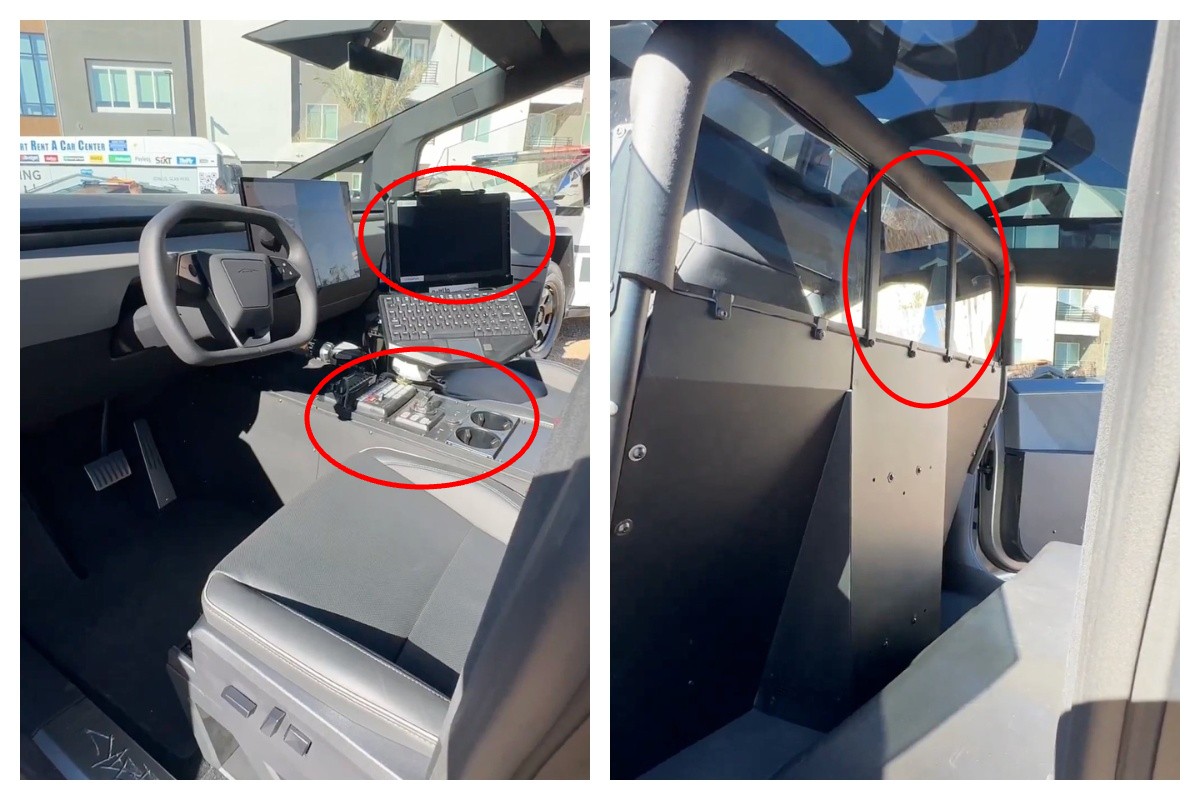
The first look at the Tesla Cybertruck police cruisers for the Las Vegas Metro Police Department has been going around as the city begins to add them to its active fleet.
The LVMPD released a new video of the police cruisers that were donated by billionaires Ben and Felicia Horowitz, showing their design, as well as the first look at the front of the vehicle where police will sit, as well as the back where the criminals will think about their actions.
Tesla Cybertruck police fleet in Las Vegas pic.twitter.com/Z8t2wLMVR3
— TESLARATI (@Teslarati) October 30, 2025
Sheriff Kevin McMahill commented on the addition of the Cybertrucks to the fleet, which includes recognition of their symbolism regarding the mission of the Department itself:
“These represent something bigger than a police vehicle. They represent innovation and our continued commitment to serve this community with the best tools available — safely, efficiently, and responsibly. They can handle everything from Fremont Street to Red Rock Canyon.”
The LVMPD had the Cybertrucks primed for law enforcement use by Upfit Tesla, a division of Unplugged Performance, the unequivocal leader in performance upgrades for Teslas.
The first look at the interior of the police cruisers is awesome to see, especially as it shows the Cybertruck’s ability to cater to every and any application for personal or professional use.
The front of the Cybertruck police vehicle shows an interior fully outfitted for a shift in Las Vegas. A laptop is mounted next to the center touchscreen, and siren and light controls are located in the center for easy access for officers:
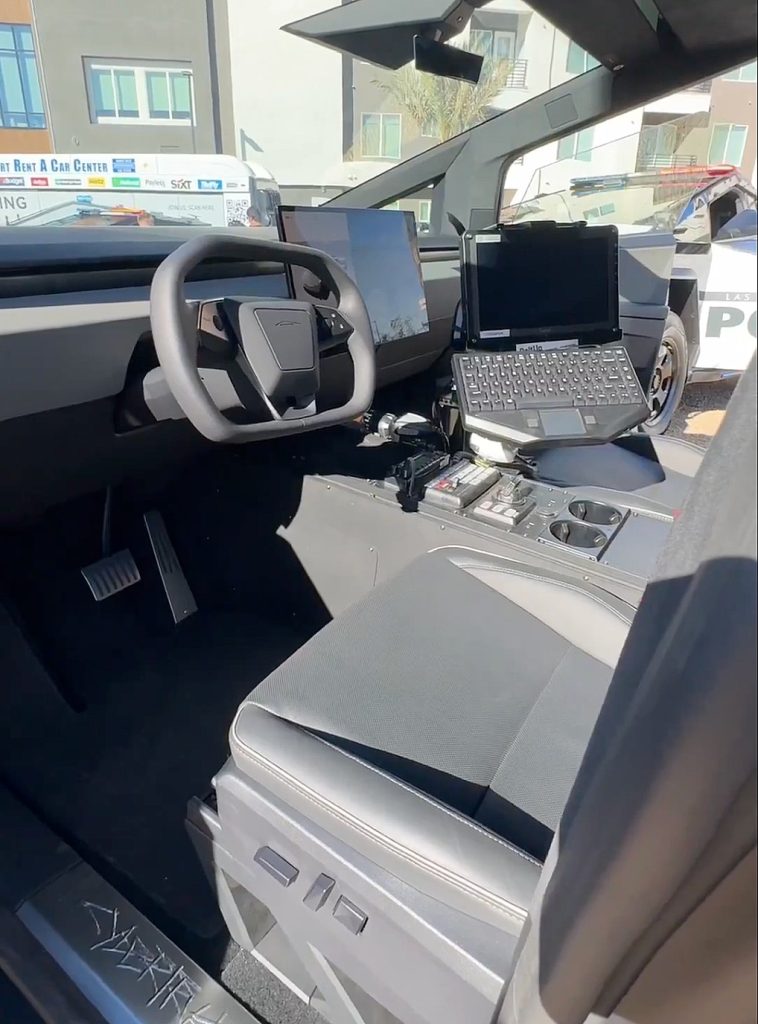
The rear of the cruiser is plain and fitted with plastic seats, typical for the transportation of criminals and suspects, as well as a partition that appears to be made of ballistic glass, helping to protect officers from those they have arrested. It is also reinforced with steel and foam lines the top of the partition:
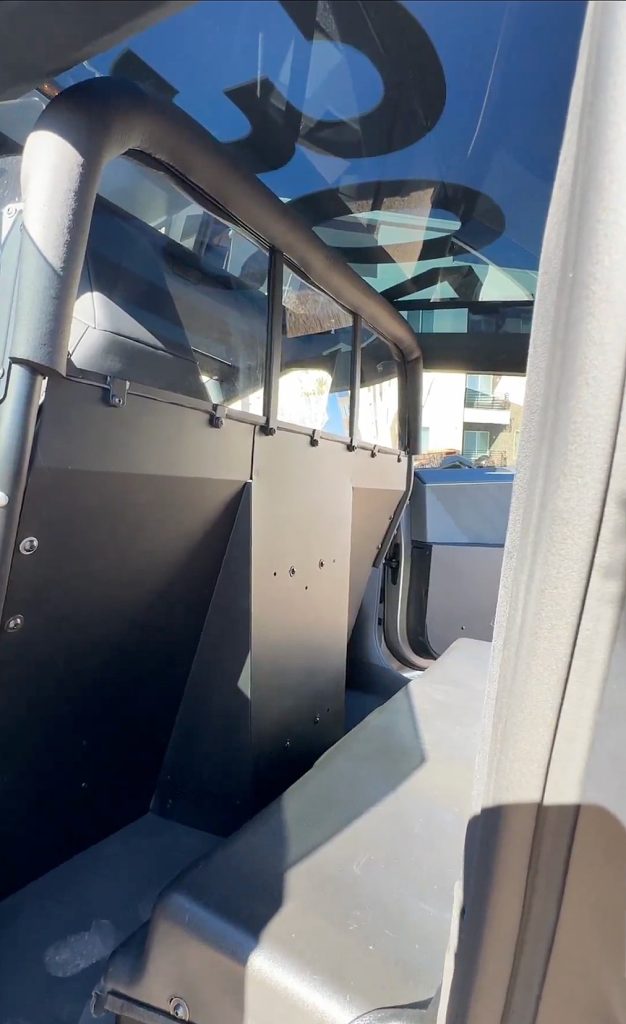
The fleet was donated shortly after a Cybertruck exploded at the front entrance of Trump Tower in Las Vegas in January. While the person inside lost their life, the Cybertruck’s ability to muffle most of the blast and keep damage relatively limited to the building impressed many.
-
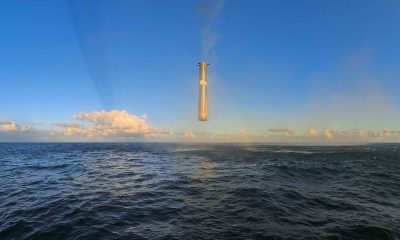
 Elon Musk2 weeks ago
Elon Musk2 weeks agoSpaceX posts Starship booster feat that’s so nutty, it doesn’t even look real
-

 Elon Musk2 weeks ago
Elon Musk2 weeks agoTesla Full Self-Driving gets an offer to be insured for ‘almost free’
-
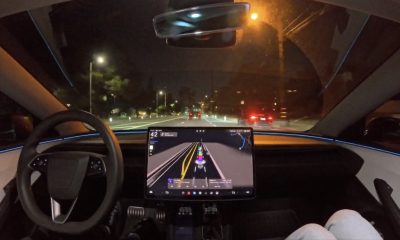
 News2 weeks ago
News2 weeks agoElon Musk confirms Tesla FSD V14.2 will see widespread rollout
-
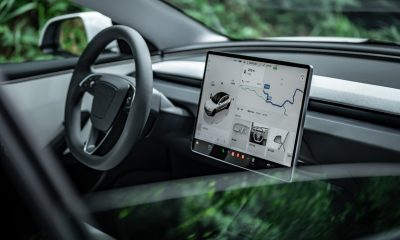
 News2 weeks ago
News2 weeks agoTesla is adding an interesting feature to its centerscreen in a coming update
-
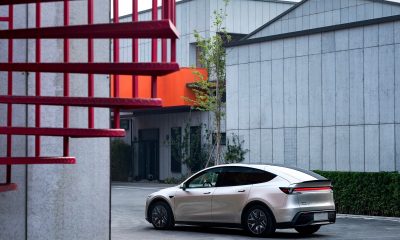
 News2 weeks ago
News2 weeks agoTesla launches new interior option for Model Y
-
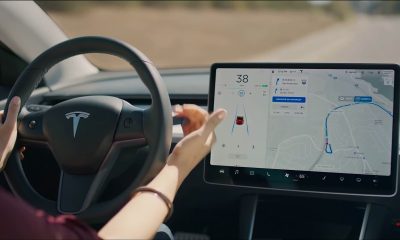
 News2 weeks ago
News2 weeks agoTesla widens rollout of new Full Self-Driving suite to more owners
-
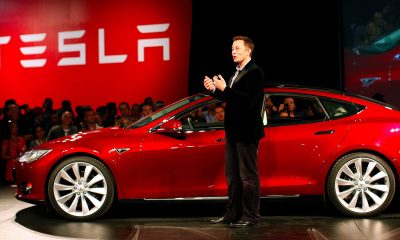
 Elon Musk2 weeks ago
Elon Musk2 weeks agoTesla CEO Elon Musk’s $1 trillion pay package hits first adversity from proxy firm
-

 News2 weeks ago
News2 weeks agoTesla might be doing away with a long-included feature with its vehicles

